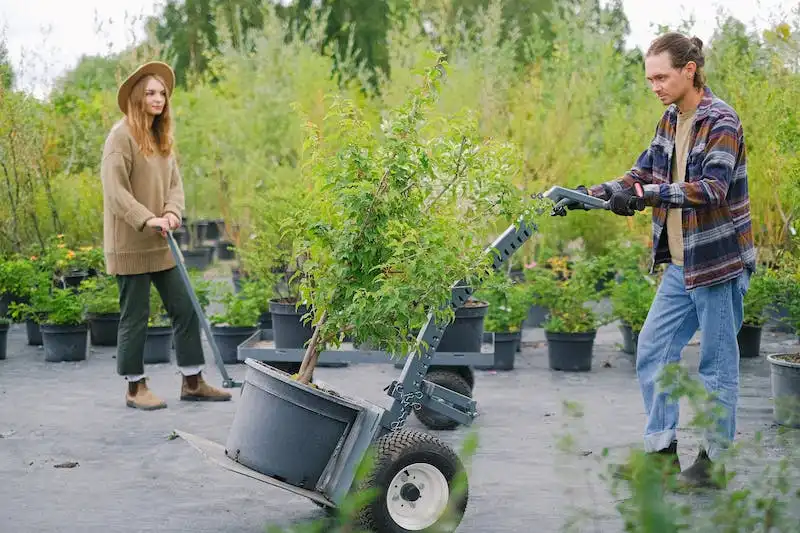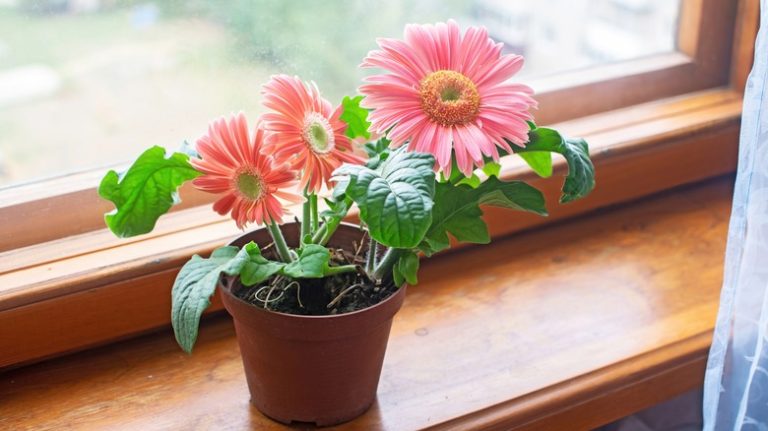The U.S. Forest Service, an agency of the U.S. Department of Agriculture, is the head of the U.S. Department of Agriculture. It oversees the management and conservation of the nation’s forest resources. The agency’s mission is to sustain the health, diversity, and productivity of the nation’s forests and grasslands to meet the needs of present and future generations.
The Forest Service is known for its toothed leaves, which are a distinguishing feature of many tree species. These leaves have sharp, pointed edges similar to the teeth of a saw. The leaves vary in size and shape, and can range from small and narrow to large and broad. They are typically green-yellow in color, although some species have leaves that are entirely green or yellow. This unusual leaf shape and coloration is an adaptation that helps the trees conserve water and survive in their native habitats.
In April, as the weather warms and the soil thaws, the Forest Service begins its work in earnest. The agency’s employees fan out across the country to care for and manage the nation’s forests and grasslands. They are responsible for performing a wide range of tasks, including planting and caring for trees, controlling pests, and studying the effects of climate change on forest ecosystems.
One of the pests the Forest Service has to deal with is the pine beetle, a tiny insect that can wreak havoc on pine forests. The beetles lay their eggs in the bark of pine trees, and their larvae feed on the tree’s inner tissues. This damages the tree and can lead to its death. The Forest Service takes measures to control the pine beetle population, such as removing infested trees and using insecticides to kill the beetles.
The Forest Service also works to prevent forest fires. In areas prone to wildfires, the agency clears away dry brush and foliage, creates firebreaks, and educates the public about fire safety. During fire season, the Forest Service monitors weather conditions and issues warnings and advisories when necessary. Its goal is to reduce the risk of wildfires and protect both people and natural resources.
The Forest Service also plays a vital role in the production and distribution of timber and other forest products. Its partnerships with industry and local communities help create jobs and economic opportunities in rural areas. The agency carefully manages the extraction of these resources to ensure their sustainability. It also promotes the use of wood products as a renewable and environmentally friendly alternative to plastics and other non-renewable materials.
Bleeding Heart Flower Care: Growing Dicentra Spectabilis
The bleeding heart, also known by its scientific name Dicentra spectabilis, is a beautiful perennial flower that belongs to the family Fumariaceae. It gets its name from the unique shape of its flowers, which resemble hanging hearts with drops of blood. This stunning flower is native to the woodlands of the northwest United States and can be commonly found growing in shaded areas.
Growing bleeding heart flowers requires proper care and attention to ensure their health and beautiful blooms. Here are some important tips for caring for Dicentra spectabilis:
Growing Conditions:
Bleeding heart flowers prefer well-drained soil that has been enriched with organic matter. They thrive in cool weather and should be planted in a shaded or partially shaded area. The ideal temperature range for these plants is between 55-70°F (13-21°C). They are less tolerant of hot and dry conditions, so be sure to provide adequate moisture.
Soil Requirements:
The soil should be a blend of various soil properties. It should be rich in organic matter and have good drainage. Adding compost or well-rotted manure to the planting area can help improve soil fertility. Bleeding heart flowers also prefer slightly acidic soil with a pH range of 5.5-6.5. Adding phosphorous-rich fertilizer can help promote healthy growth.
Planting and Propagation:
Bleeding heart flowers can be planted either by seed or by dividing existing plants. If you choose to divide them, it’s best to do so in early spring or fall. Dividing the plants allows them to spread and produce additional flowers. When planting, be sure to space them about 18-24 inches apart to allow for proper growth.
Watering:
Keep the soil consistently moist, but not overly saturated. Water the bleeding heart flowers regularly, especially during dry spells. Water the plants at the base to avoid wetting the leaves, as this can lead to fungal diseases.
Mulching:
Mulch around the base of the plants to help retain moisture and control weed growth. This will also provide insulation during temperature fluctuations, protecting the roots from extreme weather conditions.
Pruning:
After the bleeding heart flowers have finished blooming, you can remove the spent flower stalks to encourage new growth. Prune away any dead or wilting foliage throughout the growing season. In the late fall, you can cut the plants back to the ground to prepare them for winter dormancy.
Pests and Diseases:
Bleeding heart flowers are generally resistant to pests and diseases. However, they can be susceptible to slug and snail damage. To prevent this, you can create barriers using organic snail and slug repellents or pick them off by hand.
By following these care tips, you can enjoy the elegance and beauty of bleeding heart flowers in your garden. Whether you choose the classic Dicentra spectabilis with pink or white heart-shaped blossoms, or other varieties like the lacy blue or red-stemmed Albawhite, these plants will surely add a touch of charm to your landscape.
Bleeding Heart Overview
The bleeding heart is a beautiful flowering plant that is native to the Pacific Northwest. It is specifically grown for its unique heart-shaped flowers that appear in various shades of pink, red, and white. The plant takes up space in the garden but is hardy and requires little care.
When caring for bleeding hearts, it is important to provide them with proper sunlight and soil conditions. They’ll do best in a well-draining soil that is rich in organic matter. Morning sunlight is preferred, as it helps prevent wilting from the heat of the afternoon sun.
Although bleeding hearts are generally fine in terms of pest problems, they can sometimes suffer from leaf-spotting and leaf-blight. These problems can be minimized by providing good air circulation and avoiding overhead watering. If leaflets appear, it is best to remove and dispose of them to prevent further spread of the disease.
One popular cultivar of bleeding heart is the Pacific Bleeding Heart (Dicentra formosa). It produces lovely pink flowers and is known for its lacy foliage. Another popular variety is the King of Hearts (Dicentra spectabilis ‘King of Hearts’), which has dark red flowers and heavily divided foliage.
Bleeding hearts can be grown from seeds or purchased as potted plants. If starting from seeds, they should be sown in a seed-starting mix and kept in a warm environment (around 75 degrees Fahrenheit) until they germinate. Once established, the plants will need regular watering and a layer of mulch to conserve moisture and suppress weeds.
It is important to note that bleeding hearts will die back in winter and go dormant until the following spring. To care for them during this period, simply stop watering and allow the foliage to naturally wilt and die. Protective mulch can be applied to protect against frost.
In summary, bleeding hearts are a popular and beautiful plant that adds a touch of elegance to any garden. Whether grown in full sunlight or partial shade, these hardy plants will produce a show of heart-shaped flowers and lacy foliage. With proper care and attention, they’ll thrive and bring joy to any gardener.
Types of Bleeding Heart Plant
Bleeding Heart plants (Dicentra) are known for their beautiful heart-shaped flowers. There are several different types available, each with its own unique characteristics.
One popular type is the Pacific Bleeding Heart (Dicentra formosa). It produces pink or sometimes white flowers and blooms heavily in the spring. The Asian Bleeding Heart (Dicentra spectabilis) is another popular choice, with its rose-colored flowers and golden-yellow foliage.
When planting Bleeding Heart, it’s important to choose a proper location. These plants prefer light shade and well-drained soils. They are also sensitive to heat, so planting them in the afternoon shade can help prevent leaflet burning.
Bleeding Heart plants need regular watering to thrive. Be sure to water them deeply and evenly, allowing the soil to dry out slightly between waterings. Overwatering can lead to root rot and other problems.
Dividing Bleeding Heart plants every few years is also a good idea to keep them healthy and promote new growth. This can be done by carefully digging up the plant and separating the roots into smaller sections. Replant the divided sections, making sure to space them out properly to allow for ample growth.
Pruning is also important for maintaining the appearance of Bleeding Heart plants. After the flowers fade, prune the stems down to the ground to encourage new growth. This will also help prevent the plant from becoming overgrown and crowded.
Bleeding Heart plants can be grown from seeds, but they can take up to a week to germinate. It’s also worth noting that the color of the flowers may not be true to the parent plant when grown from seeds.
Overall, Bleeding Heart plants are a beautiful addition to any garden. Their unique heart-shaped flowers and diverse foliage colors make them a standout choice for both novice and experienced gardeners. With proper care and attention, these stunning plants can thrive in a wide range of growing conditions.
Bleeding Heart Plant Care
If you want a lovely flowering plant in your garden, consider the Bleeding Heart Plant. This popular plant, also known as Lamprocapnos spectabilis or Dicentra spectabilis, is a favorite for many gardeners due to its unique heart-shaped flowers and fern-like foliage.
Originating from parts of Asia and North America, the Bleeding Heart Plant thrives in shady areas and woodland habitats. When planting, choose a location that receives partial to full shade, preferably near a tree or tall shrub to provide some protection from the sun.
The Bleeding Heart Plant prefers well-draining soil rich in organic matter. Before planting, amend the soil with compost or aged manure to improve its fertility and drainage. Adding a layer of mulch around the base of the plant can help retain moisture and suppress weeds.
To care for your Bleeding Heart Plant, keep the soil consistently moist but not waterlogged. Water it regularly, especially during dry periods, and avoid letting the soil dry out completely. Watering the plant at its base, rather than overhead, can help prevent problems like leaf spot and powdery mildew.
When it comes to fertilizing, a slow-release, balanced fertilizer applied in early spring can provide the nutrients the plant needs. Make sure to follow the package instructions for application rates.
If you’re growing Bleeding Heart Plants in containers, choose a pot that’s wide and deep enough to accommodate the plant’s root system. Use a well-draining potting mix with added sand to improve drainage.
Repotting may be needed every few years to provide fresh soil and nutrients. When repotting, be gentle with the plant’s delicate roots and avoid damaging them.
Bleeding Heart Plants are generally low-maintenance, but they may encounter some common problems. Scale insects can sometimes infest the plant, so it’s essential to keep a close eye and take appropriate measures if an infestation occurs.
It’s also not uncommon for Bleeding Heart Plants to die back after flowering in the summer. This is a natural part of their growth cycle, and the plant will re-emerge in the following spring.
In conclusion, caring for a Bleeding Heart Plant involves providing a shady location, well-draining soil, regular watering, and occasional fertilization. With proper care, you can enjoy the beautiful blooms and foliage of this old-fashioned favorite.




